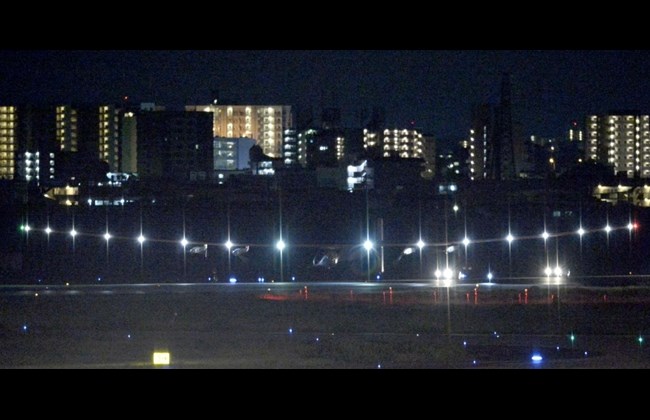-
Tips for becoming a good boxer - November 6, 2020
-
7 expert tips for making your hens night a memorable one - November 6, 2020
-
5 reasons to host your Christmas party on a cruise boat - November 6, 2020
-
What to do when you’re charged with a crime - November 6, 2020
-
Should you get one or multiple dogs? Here’s all you need to know - November 3, 2020
-
A Guide: How to Build Your Very Own Magic Mirror - February 14, 2019
-
Our Top Inspirational Baseball Stars - November 24, 2018
-
Five Tech Tools That Will Help You Turn Your Blog into a Business - November 24, 2018
-
How to Indulge on Vacation without Expanding Your Waist - November 9, 2018
-
5 Strategies for Businesses to Appeal to Today’s Increasingly Mobile-Crazed Customers - November 9, 2018
Solar Impulse plane departs Japan, headed for Hawaii
The plane requires the right weather conditions, and organizers were withholding an official announcement of the takeoff until they are sure the flight can continue.
Advertisement
The first 10 hours of flight were hard for the team who had to solve technical problems before giving the final go to head for Hawaii when Solar Impulse was already off the coast of Japan. The challenge for the pilot of the aircraft is that he can no longer return to Japan if the weather gets bad again.
If successful the flight will be the longest-duration solo flight in aviation history. The flight is expected to take five days and five nights, crossing a total of more than 4,000 miles (6,400 kilometers) and traversing the same desolate region whereAmelia Earhart disappeared 77 years ago. Nap times will be short.
The Solar Impulse epic journey began on 8 March in Abu Dhabi with the craft touching down in Oman, India, Myanmar, China and Japan so far.
Bertrand Piccard, the other pilot behind the project, and the first person to fly round the world in a hot air balloon, is watching this leg from the ground. The plane was also slightly damaged upon landing in Japan, but necessary repairs were made.
The Solar Impulse 2 was forced to land at Nagoya Airfield in Japan on Monday night due to concerns about weather.
One of the weather obstacles plaguing the flight has been a meteorological phenomenon common over eastern Asia and the western Pacific Ocean this time of year. It was just the latest string of bad weather to bedevil the mission to power a plane around the world using only the Sunday.
Besides the change in altitude daily, the pilot will also experience temperature changes of 55C in the unpressurised, Solar Impulse 2 cockpit. A takeoff last Wednesday was aborted at the last moment due to a prediction of clouds near Hawaii. From there, Solar Impulse will land at a location in the Midwest, then in New York City.
Advertisement
A revolutionary solar-powered aircraft was past “the point of no return” and flying over the Pacific Ocean bound for Hawaii Monday, on the most ambitious leg of its quest to circumnavigate the globe. The founders seek to demonstrate capabilities of clean energy technologies.




























